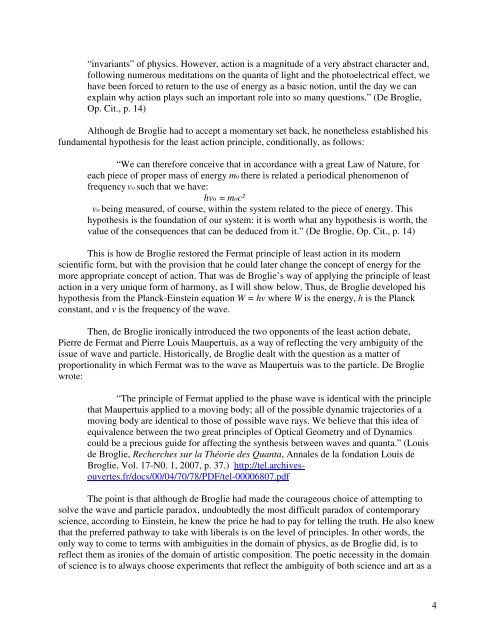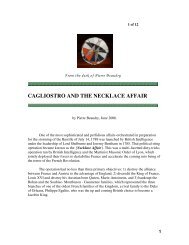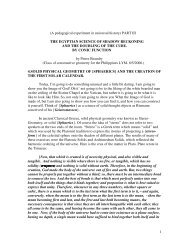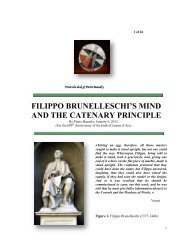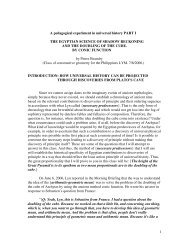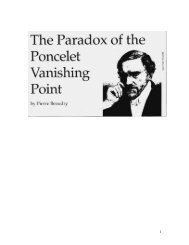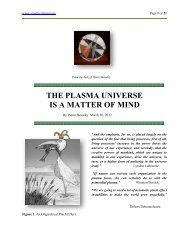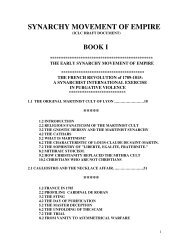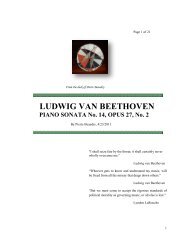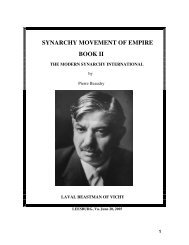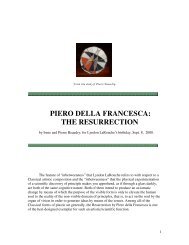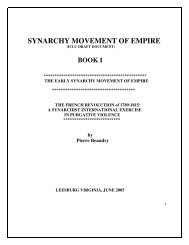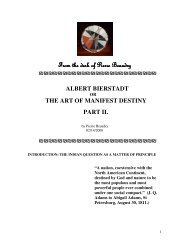LOUIS DE BROGLIE : THE WAVE AND PARTICLE PARADOX
LOUIS DE BROGLIE : THE WAVE AND PARTICLE PARADOX
LOUIS DE BROGLIE : THE WAVE AND PARTICLE PARADOX
Create successful ePaper yourself
Turn your PDF publications into a flip-book with our unique Google optimized e-Paper software.
“invariants” of physics. However, action is a magnitude of a very abstract character and,following numerous meditations on the quanta of light and the photoelectrical effect, wehave been forced to return to the use of energy as a basic notion, until the day we canexplain why action plays such an important role into so many questions.” (De Broglie,Op. Cit., p. 14)Although de Broglie had to accept a momentary set back, he nonetheless established hisfundamental hypothesis for the least action principle, conditionally, as follows:“We can therefore conceive that in accordance with a great Law of Nature, foreach piece of proper mass of energy mo there is related a periodical phenomenon offrequency vo such that we have:hvo = moc²vo being measured, of course, within the system related to the piece of energy. Thishypothesis is the foundation of our system: it is worth what any hypothesis is worth, thevalue of the consequences that can be deduced from it.” (De Broglie, Op. Cit., p. 14)This is how de Broglie restored the Fermat principle of least action in its modernscientific form, but with the provision that he could later change the concept of energy for themore appropriate concept of action. That was de Broglie’s way of applying the principle of leastaction in a very unique form of harmony, as I will show below. Thus, de Broglie developed hishypothesis from the Planck-Einstein equation W = hv where W is the energy, h is the Planckconstant, and v is the frequency of the wave.Then, de Broglie ironically introduced the two opponents of the least action debate,Pierre de Fermat and Pierre Louis Maupertuis, as a way of reflecting the very ambiguity of theissue of wave and particle. Historically, de Broglie dealt with the question as a matter ofproportionality in which Fermat was to the wave as Maupertuis was to the particle. De Brogliewrote:“The principle of Fermat applied to the phase wave is identical with the principlethat Maupertuis applied to a moving body; all of the possible dynamic trajectories of amoving body are identical to those of possible wave rays. We believe that this idea ofequivalence between the two great principles of Optical Geometry and of Dynamicscould be a precious guide for affecting the synthesis between waves and quanta.” (Louisde Broglie, Recherches sur la Théorie des Quanta, Annales de la fondation Louis deBroglie, Vol. 17-N0. 1, 2007, p. 37.) http://tel.archivesouvertes.fr/docs/00/04/70/78/PDF/tel-00006807.pdfThe point is that although de Broglie had made the courageous choice of attempting tosolve the wave and particle paradox, undoubtedly the most difficult paradox of contemporaryscience, according to Einstein, he knew the price he had to pay for telling the truth. He also knewthat the preferred pathway to take with liberals is on the level of principles. In other words, theonly way to come to terms with ambiguities in the domain of physics, as de Broglie did, is toreflect them as ironies of the domain of artistic composition. The poetic necessity in the domainof science is to always choose experiments that reflect the ambiguity of both science and art as a4


